Not much beats the thrill of welcoming new baby chicks to your home or farm. Whether you are an experienced grower or starting your first backyard flock, one thing we can all agree on is that the first several weeks of a bird's life are the MOST important for their long-term health.
Here at Southland Organics, we are ecstatic to be welcoming 17 of our own day-old chicks! We have been hard at work preparing for their arrival this summer. We're so excited to watch these chicks grow and, before too long, enjoy fresh chicken eggs in our office kitchen!
What you Need to Raise Baby Chicks
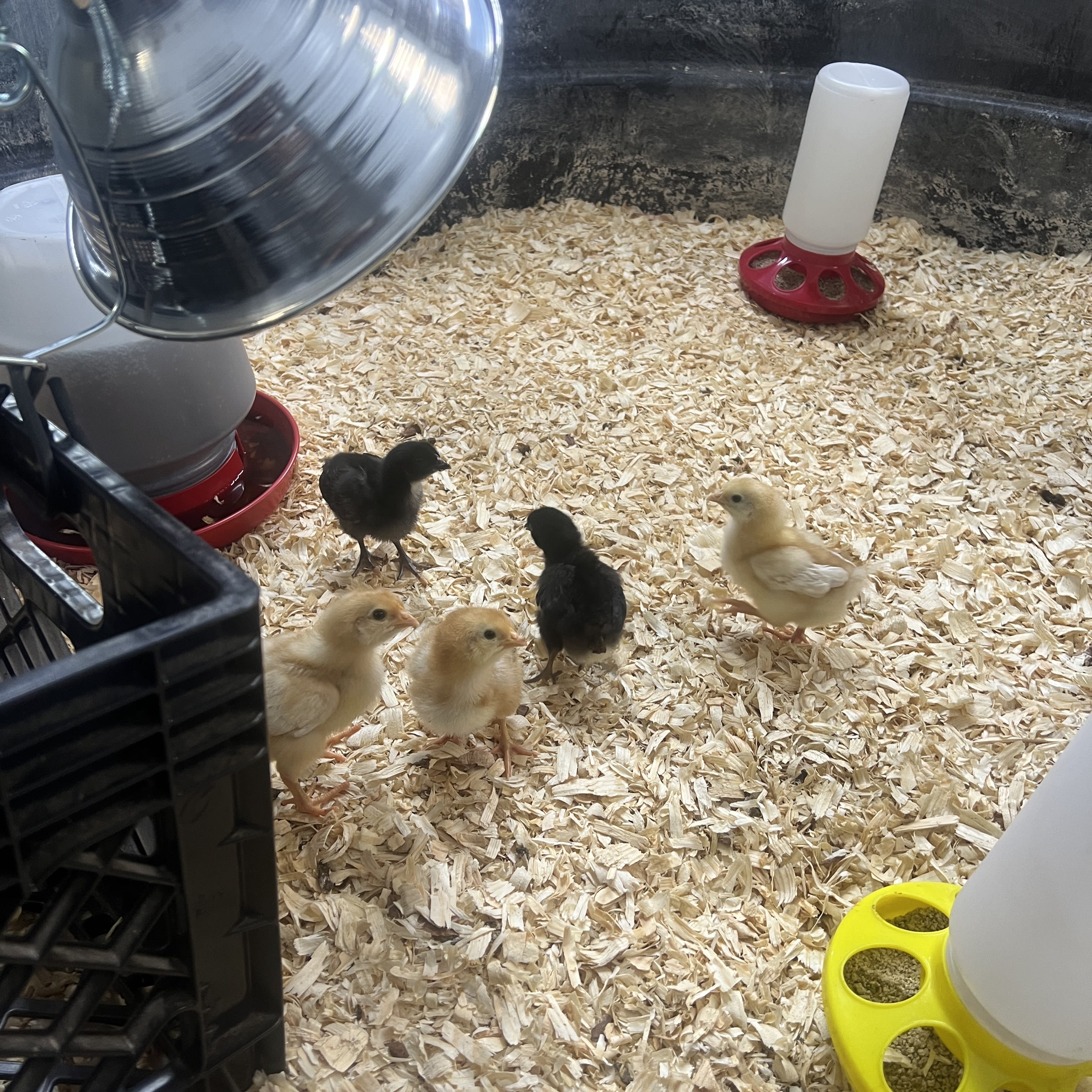
Before you actually raise chicks, what do you need? Here is our checklist. You can buy these items online or at your local feed store. We did a combination of both!
-
Something to put the baby chicks in
-
Bedding
-
Feed
-
Feeder
-
Waterer
-
Heat lamp
Read on for explanations of how to select each of these items!
Note that building a coop is a different matter than what we're outlining here. Chicks have to develop more before they can live in a chicken coop. That's what this setup is for! We'll admit we made a pretty rockin' coop for our chickens- soon, we'll post a blog about how we built it. But for now, let's focus on where your day-old baby chicks should live when they arrive or hatch.
Ordering New Chicks
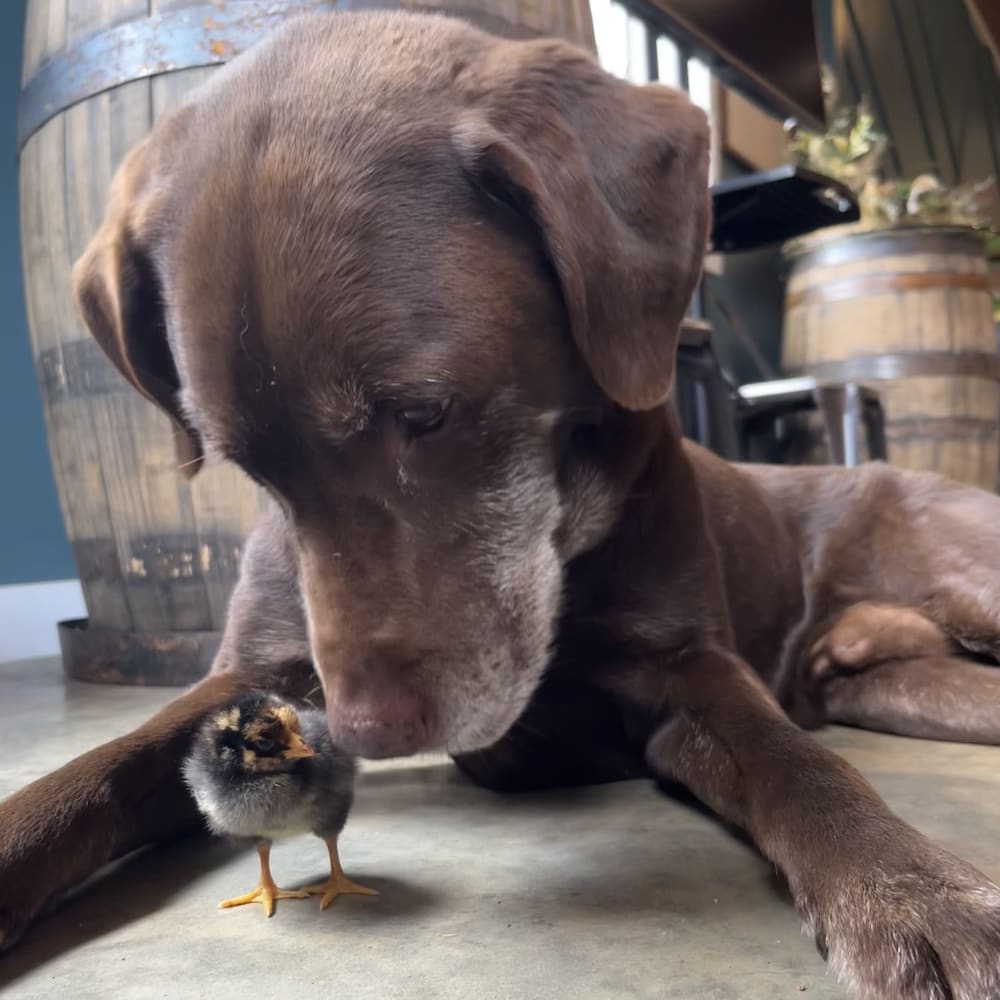
First things first, the chicks! If you simply Google “order backyard chickens,” you might be surprised at how many hatcheries are available to ship live birds.
For us, it was important that our chicks feature a large variety of breeds and arrive as quickly and healthy as possible. We found all of these qualities from Murray McMurray Hatchery. This hatchery offers 48-hour live-arrival assurance, which simply means that our chicks will have been in transit for less than 48 hours.
Additionally, they participate in the National Poultry Improvement Plan (NPIP 42-10) which ensures that all baby chicks from their hatchery are from parent animals free of Pullorum, Typhoid and Avian Influenza diseases. Parent stock are also vaccinated for Newcastle/Bronchitis (B1), Bursal, AE and Marek's. Chick vaccinations for coccidiosis and Newcastle are available as well!
There are a wide variety of chickens available to order nationwide. We recommend researching the birds you're considering before buying them. We decided to get several different types, mostly for fun! Of course, you'll also need to get at least one rooster if you want to have fertile eggs.
Preparing a Place for Baby Chicks
Brooder
So, chicks have been picked out and ordered. What’s next?
Our next step was preparing a home for our new feathered friends. Newly hatched chicks are poikilothermic, which means they are not able to regulate their own body temperature. To help them with that, it is important to provide them with somewhere warm and dry to live in for the first four to six weeks you have them! This is called a brooder.
Your brooder can be as simple as a large box, plastic tote or a metal bin. No matter what you choose, be sure that your chicks have enough room in the brooder—about one-half square foot per baby chick at minimum!
Bedding
Whatever container you choose for your brooder should be bedded with a one inch layer of wood shavings, rice hulls, sand, pine shavings or ground corn cobs. For the first couple days, cover this bedding with newspaper to make sure that the chicks become accustomed to their feed rather than eating their bedding!
Heat Lamp
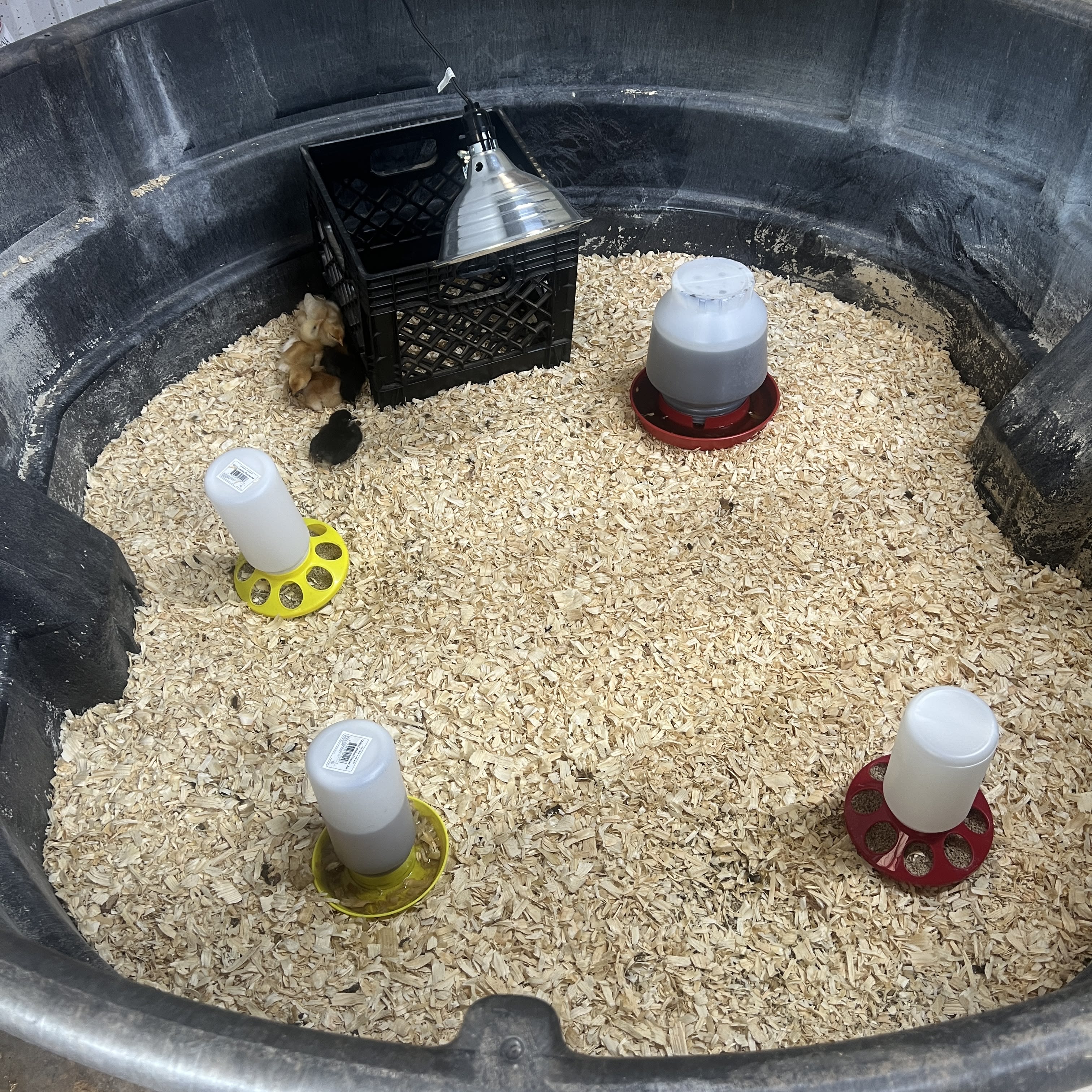
Finally, it is important to add a heating lamp to your brooder to provide some extra heat. These should be installed at least 18 inches above the chicks. This will prevent any chicks from getting burned or overheated!
If chicks are huddling under their heat lamp, they may not be getting enough heat. You may need to drop the heat lamp or add additional lamps.
If they are avoiding their lamp, it may be too hot for them. You may need to raise the lamp!
As a rule, brooders should be anywhere from 90-95 degrees for the first week, with temperatures reduced 5 degrees per week until reaching 70 degrees.
Chick Starter Feed and Water
Last but certainly not least, your growing chicks will need plenty of chick feed and water! If you already have a brooder and are hatching eggs, this is where you come in.
It is important that young chicks receive a protein dense diet for the first four weeks of their lives. This is referred to as chick starter and, for chicks and bantams, it should be 18% protein.
It is normal for day old chicks to avoid eating. This is because they are still digesting the remaining yolk from within their egg. However, as soon as chicks arrive, it is important that they have access to plenty of clean, cool drinking water!
Before placing your chicks in their brood, dip each of their beaks in their waterer and place them next to it. This will ensure that they know where to find it later!
Watering recommendations change with age. For the first week, one quart waterer should be offered for every 20 chicks. By week two, they will need one gallon waterer per 20 birds. By week 4, each 20 birds will need a three-gallon waterer.
Feed and Water Supplements
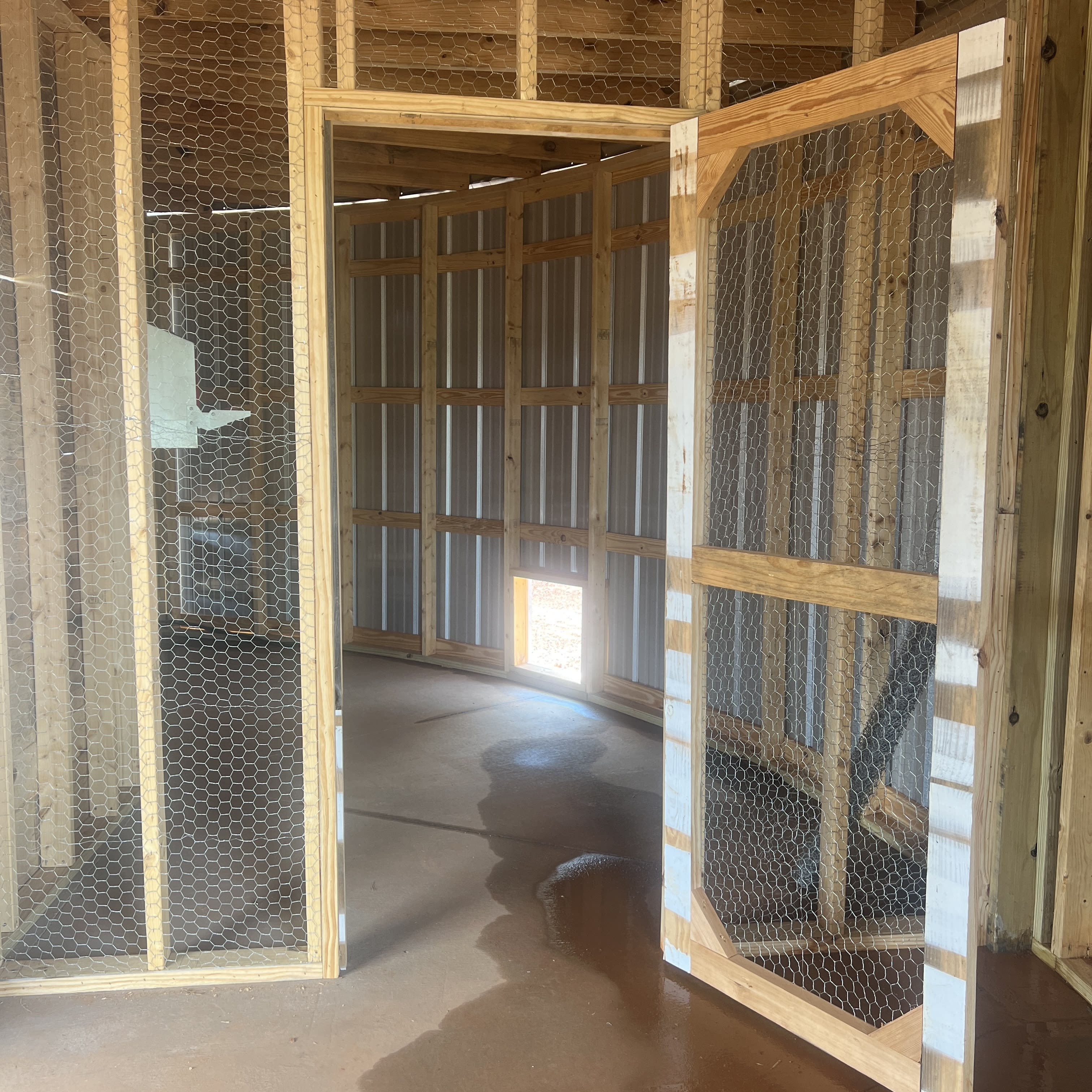
To help with any shipping stress, day old chicks can be given Southland Organics Hen Helper Probiotics and Electrolytes and Liquid Catalyst Poultry Vitamin. This will replenish their vitamins and electrolyte balance while supplementing their gut to ensure they are off to the healthiest start possible!
Adding these supplements will help with issues like pasty butt (a.k.a. vent gleet) and vitamin deficiencies right off the bat. It's a great way to start off your chicks for healthy flock in the long run!
For complete backyard coop care, we offer a package of three chicken supplements: Our Hen Helper probiotic, Catalyst vitamin, and Mother Load apple cider vinegar infused with garlic. We call it our backyard poultry bundle. It's a great way to have a consistent supply of the nutrient supplements that are needed year round. For a better idea of how this works for chicks, check out our backyard poultry dosing chart.
After one to two weeks, you can start to give your chicks treats and chick grit.
Moving Into the Coop
After 6-10 weeks, you can move your birds out of the brooder and into their official chicken coop! The exact amount of time they need to brood depends on the breed of chicken and the size of the breed. The bottom line is, once a chicken's feathers are fully developed they can control their temperature and move into their coop!
Raising Baby Chicks with Adult Birds
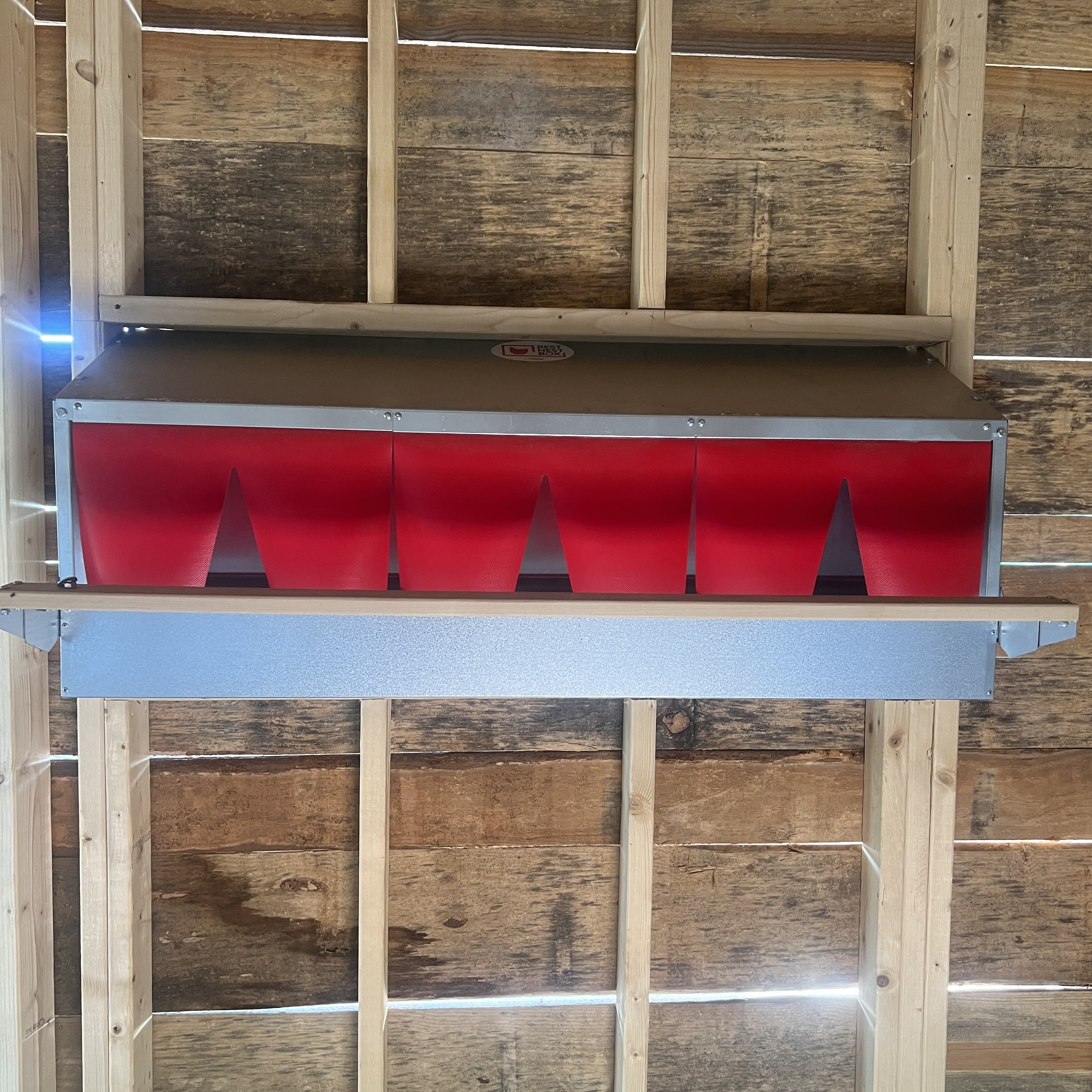
What if you already have adult birds in your coop? How can you acquaint baby chickens with adult birds that are not their mother hen? Whether or not you already have adult chickens when you raise your new chicks, they still need to brood separately.
If you have adult birds present when your chicks move into their coop, you have two options. You can just put your chicks in the coop with the adult chickens and see how they react to one another. If you're a bit hesitant to go with that plan, you can separate your coop so the adults and chicks have contact with one another, but aren't physically together.
We're here to help!
Raising chickens is such a joy, whether for the fresh eggs or the great company. We want you to know that we're here to help you throughout the process of starting, running and enjoying your chicken coop! We are going through the same process with our coop, so we understand. We want to share our knowledge with you and support you in having the healthiest, happiest birds possible.
Reach out to us at support@southlandorganics.com or call us at 800-608-3755.






